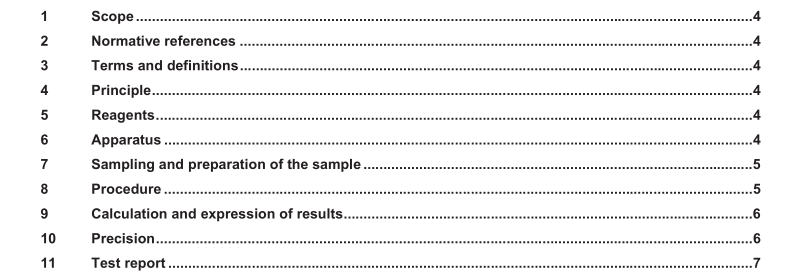EN 14667:2005 – Surface active agents – Determination of low boiling solvents in liquid formulations – Gas chromatographic method

1 Scope
This European Standard specifies a method for the determination of the content of low boiling solvents, e.g. ethanol, ethanol propan-1-ol and propan-2-ol in liquid detergents. Typically only one solvent is present in these kinds of samples.
The method is applicable to liquid detergents containing low boiling solvents in the range from 0,5 % to 10 % by weight.
2 Normative references
The following referenced documents are indispensable for the application of this document. For dated references, only the edition cited applies. For undated references, the latest edition of the referenced document (including any amendments) applies.
ISO 607, Surface active agents and detergents – Methods of sample division.
3 Terms and definitions
For the purposes of this European Standard, the following terms and definitions apply.
low boiling solvent
alcohol with a boiling point below 100 °C
NOTE For example ethanol, propan-1-ol and propan-2-ol.
4 Principle
The liquid detergent is dissolved in butan-1-ol, which is a water miscible solvent with higher boiling point than the solvents to be determined. The content of low boiling solvents is determined with gas chromatography.
5 Reagents
During the analysis, unless otherwise specified, use only reagents of recognized analytical grade that have been checked in advance as to not interfere with the analytical results.
5.1 Ethanol, purity ≥ 99,5 % (m/m)
5.2 Propan-1-ol, purity ≥ 99,5 % (m/m).
5.3 Propan-2-ol, purity ≥ 99,5 % (m/m).
5.4 Butan-1-ol, purity ≥ 99,5 % (m/m).
5.5 Carrier gas, nitrogen or helium for gas chromatography.
5.6 Auxiliary gases, for gas chromatography.
6 Apparatus
Normal laboratory apparatus and the following:
EN 14667:2005 – Surface active agents – Determination of low boiling solvents in liquid formulations – Gas chromatographic method